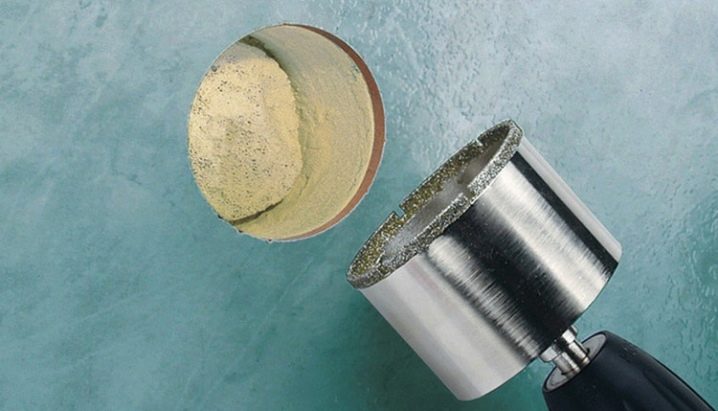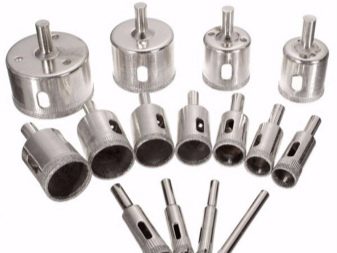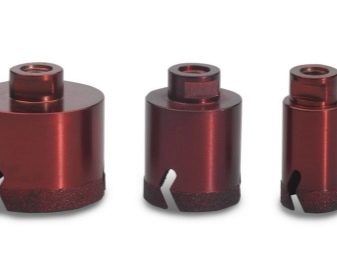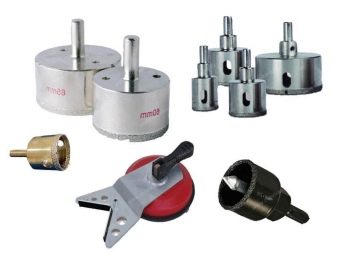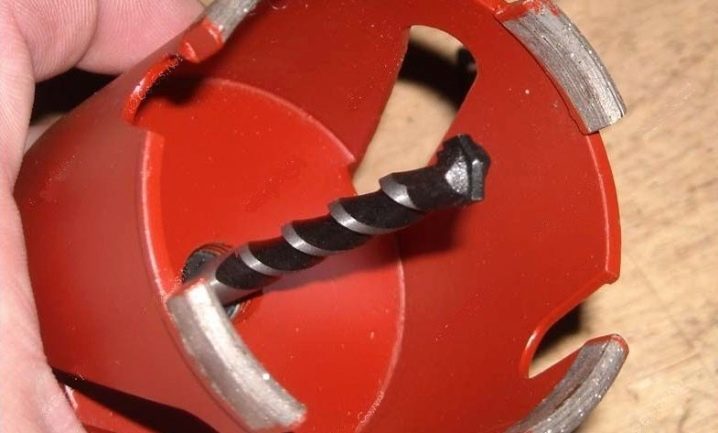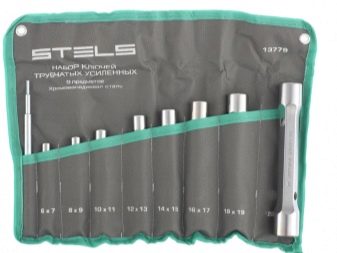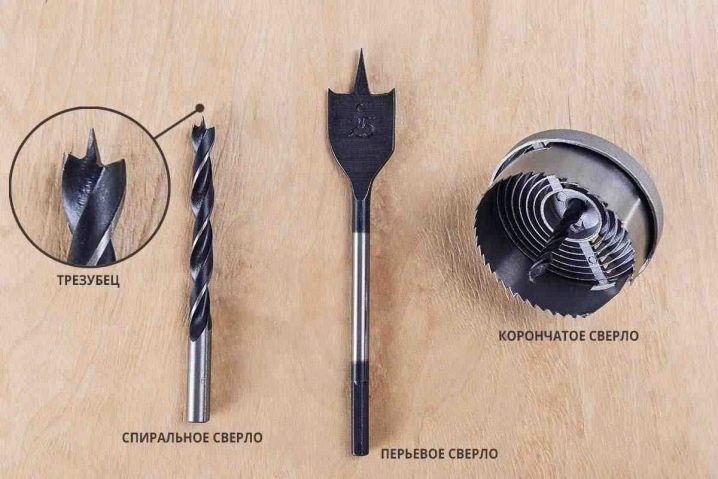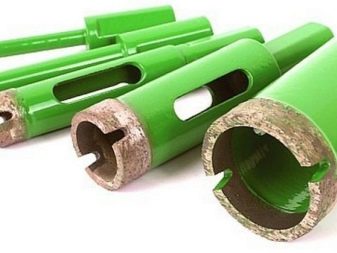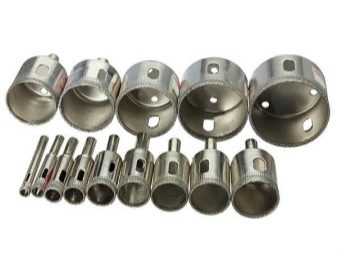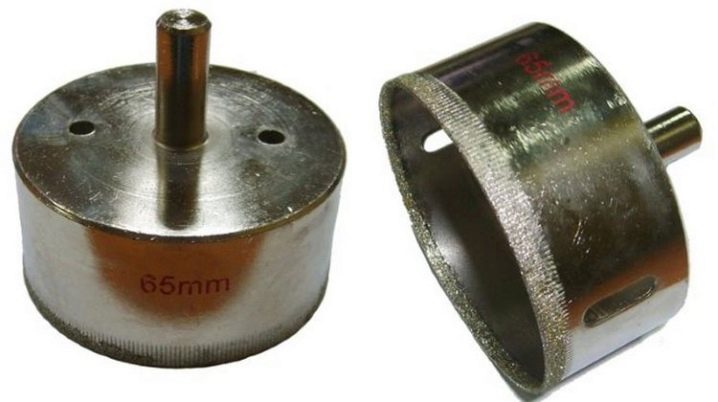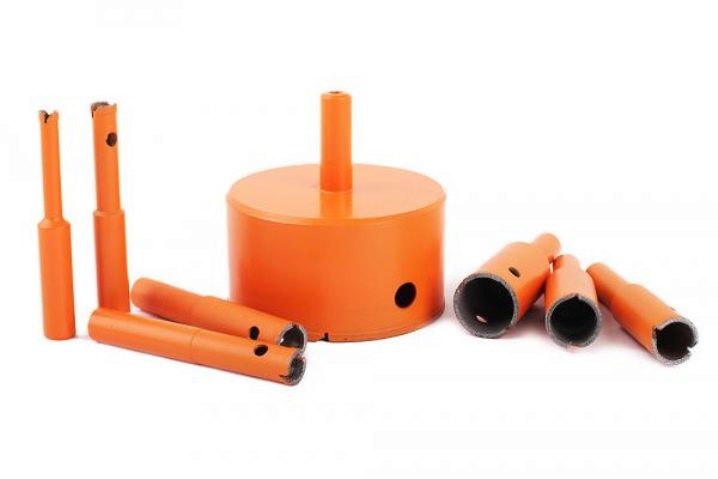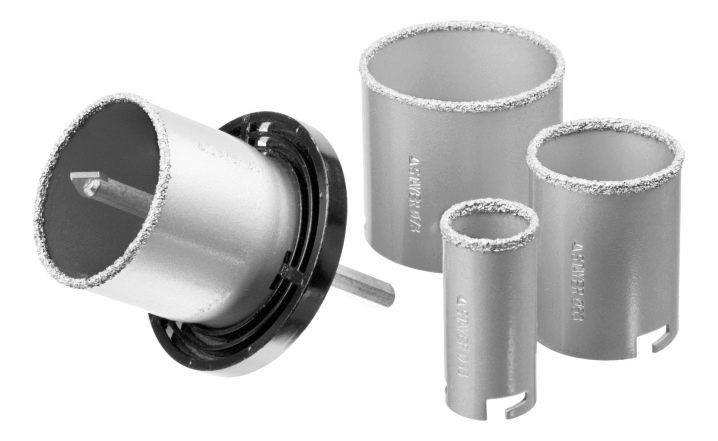Diamond crowns on ceramic granite: features of the choice and use
Porcelain can be distinguished by high durability. This quality is both a plus and a minus.
When installing the tile it needs to be cut and sometimes drilled. For holes up to 10-12 cm, spear-shaped or conventional drills are used. For large sizes, under communications, diamond crowns will be the best option. Spraying has its own characteristics that you need to know before starting work.
Tool description
The diamond crown looks quite typical and is mounted on a special metal tail. Externally, the design resembles a drill with a small bowl. Its size corresponds to the resulting hole.
Diamond crystals are fixed at the extreme part of the cutting edge using vacuum-diffusion welding. The greater the number, the easier it is to drill.. There is also an electroplating method of deposition, which also gives a dense layer of diamond "grains". Such a tool can be used to work with solid porcelain stoneware, but withThere is a risk that a nozzle with long-term use will not cope with the load and lose part of the working layer.
Such crowns do not need sharpening, their service life is many times longer than that of other drills. They are indispensable for frequent work, unpretentious in the care, they are easy to clean, change and install, but you need to cool during use.
Types of nozzles
Diamond crowns may vary. The main criteria for the differences are:
- Wall thickness. Thin walls give an accurate result, the hole will be exactly as you would like. True because of this decreases the possible life of the drill.
- Diameter can vary from 19 to 100 mm. The wide range makes it possible to make a hole of the desired size at one time.
- Is long. The depth of the hole that needs to be made in the ceramic-granite slab depends on the length of the drill.
- The size diamond segments and the distance between them affect the ease of drilling and the quality of the final hole.
- The concentration of diamonds in the bundle. The total productivity of the crown depends on this factor.At 100% concentration, diamonds occupy ¼ of the total volume of diamond deposition.
- Quantity and configuration cooling holes, or the lack thereof.
Some crowns are equipped with a central drill. In the absence of such an element are used clamps for drill - holders - or stationary machine. If there is a drill, then no additional devices for work are required.
How to choose?
In today's market there are many manufacturers who are engaged in the manufacture of such tools. Install on a drill or remove the drill is very simple, regardless of the manufacturer. When choosing a diamond crown, the following factors are taken into account:
- diameter of the future hole;
- porcelain stoneware thickness;
- hardness of granite.
Experts recommend to purchase nozzles that are made by vacuum-diffuse method. For dry drilling, you need crowns with holes for cooling.
Such devices are more expensive than those that need to be cooled independently.
Size affects the cost of the nozzle: the larger the diameter and length, the more expensive. Approach the choice wisely. Drilling holes with one drill size will save you money.
The most popular are the crowns with a diameter of 32, 35 and 68 mm. If you plan to make different holes, then purchase a set of crowns.
How to drill?
Making a hole in the porcelain is much easier than it might seem at first glance. There are a few rules that you need to follow to get a quality result. They will also help to avoid early breakage of the crown:
- Pay attention to the cooling of the crown. while working. The most important thing you have to do is to prevent the crown from heating above the allowable temperature.
- Be sure to use a backing.. You can use plywood or chipboard larger. Such a simple solution will save materials from possible damage, provide additional security during work.
- Start making a hole from the front. and constantly make sure that the drill bit exactly entered the porcelain stoneware. When leaving the crown, a small chip is always formed, which is not desirable on the decorative surface.
- Use of crowns with a central drill will save you from many mistakes.
- It is recommended not to drill until the end, and on 2/3 of the plate. Further it will be necessary only to beat out the ceramic-granite cork.
- Do not press on the drill while working too much, it may cause the tile to split. Toward the end and minimize the impact.
- Perform drilling work before mounting the plate. So you can always correct random errors.
Small holes are usually made under the dowel. Large - suitable for mounting sockets, pipes or decorative elements. For drilling, you can use it as a drill, but also a perforator with the hammer action turned off.
It is important that the device makes it possible to adjust the speed. By the way, drilling of porcelain is carried out exclusively at low speeds.
Small holes
To make in porcelain a well with a diameter of 10 mm get drills with a diamond tip. In the process of work, be sure to ensure uninterrupted supply of fluid to the tip of the drill. This is how cooling will occur and the drill will stay sharp longer.
Position the drill at a 90 degree angle during the drilling process.. To fix this position, use holders or a special machine. At the beginning of work, it is necessary to bring an already engaged drill to the porcelain stoneware, otherwise the drill bit will slip and damage the decorative layer of the tile.
Large holes
The principle of drilling large diameters does not differ from the usual work.Only here you will need diamond crowns for porcelain. Also hold a drill at an equal angle and do not forget about liquid for cooling.
Drill to the end?
During the work with porcelain tile it is admissible both through drilling, and drilling not up to the end. The latter option requires special attention. Make a hole at 2/3 of the desired depth and with a sharp blow, knock out the remaining cork. It is necessary to strike only from the face of the tile. This forms a noticeable chip on the back of the panel.
Once you started drilling, do not even think about stopping. In the process of work, the drills and oil spraying heat up, if you stop, they will again harden. Such a rash decision will adversely affect both the crown and the ceramic granite.
Cooling
When carrying out drilling works crowns with a diamond dusting strongly heat up. Because of this, the product deteriorates. With a one-time use, you may not overlook this, but soon the defect will manifest itself.
Due to overheating, the drill characteristics first deteriorate, and then destruction occurs.. In the end, you are expected to purchase a new crown.
Cooling during the work will ensure longer and high quality work of the crown. To do this, use one of the methods:
- Constant flow of water. For this method, you can get a tool that has a built-in water supply function. You can also be smart and supply water from the outside. This is not always convenient if you make a small hole.
- Puddle. At the site of the future holes make a puddle. In the process, pour water as needed. This cooling option is easier than the previous one, but less effective.
Evaluating all the nuances of the work, we can conclude that it is quite feasible to use diamond crowns when drilling ceramic granite at home.
You will learn more about diamond crowns in the next video.

